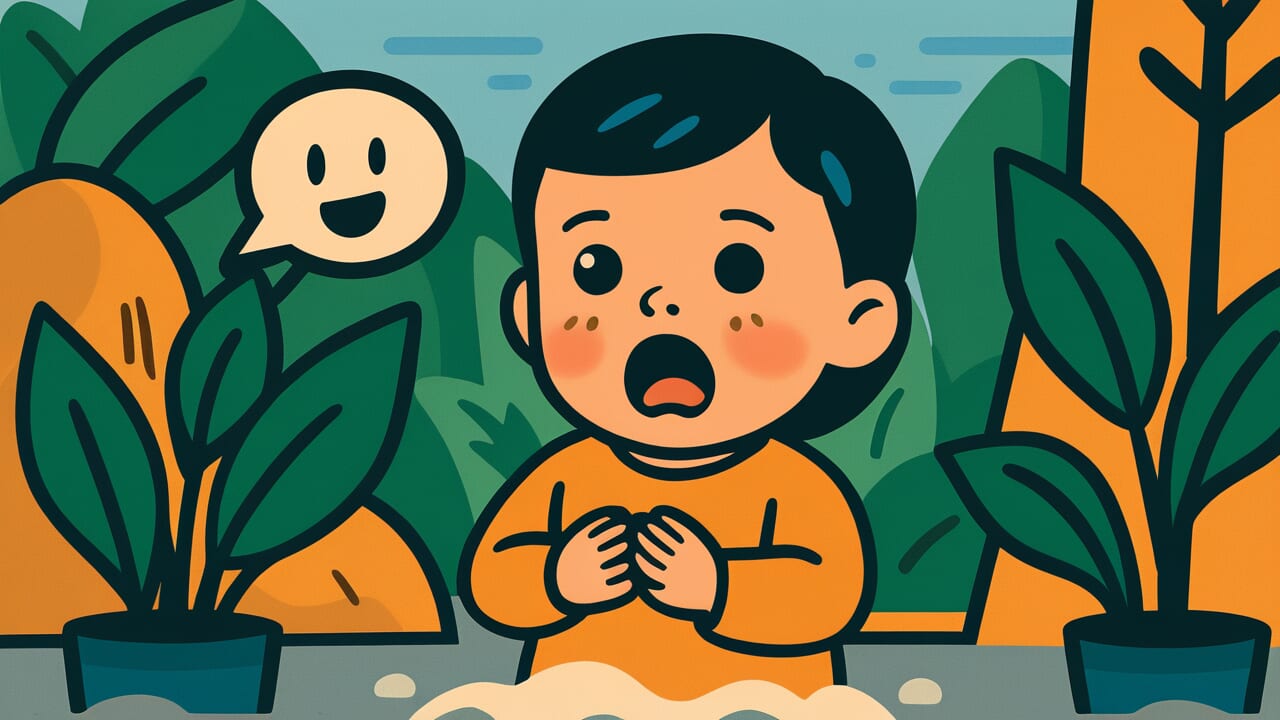How to Read “A baby grows up crying and crying”
Akago wa nakinaki sodatsu
Meaning of “A baby grows up crying and crying”
This proverb means that babies naturally cry as they grow. In fact, crying shows they are developing in a healthy way.
Babies cry to show what they need or when they feel uncomfortable. When adults respond to their crying, babies learn how to communicate.
Crying also helps babies grow physically. It makes their lungs and vocal cords stronger.
Parents use this proverb when they worry about their baby crying too much. It reminds them that crying is completely normal.
The saying means “Don’t worry too much. Babies are supposed to cry.” Even today, grandparents tell new parents this to help them feel less anxious.
Origin and Etymology
No one knows exactly where this proverb came from. But people in Japan were already using it during the Edo period (1603-1868).
Old parenting books from that time show positive views about babies crying. This suggests the proverb came from generations of parenting experience.
Traditional Japanese parenting shaped this saying. Long ago, people saw crying as a sign of life energy, not just discomfort.
They noticed that crying made babies’ lungs stronger. It helped their breathing system develop. Babies also learned to express their needs through crying.
Back then, doctors didn’t know as much about health. So when a baby cried loudly, it meant the baby was healthy and strong.
A baby who didn’t cry worried people. They thought something might be wrong. These experiences taught people that “crying is part of growing.”
The proverb may have also encouraged worried parents. It helped them feel better about their crying babies.
Usage Examples
- My baby cries a lot at night and I was worried. But “A baby grows up crying and crying,” so I decided it’s a sign of good health.
- They say “A baby grows up crying and crying,” so a loud cry means the baby has strong life energy.
Universal Wisdom
This proverb captures something important about human growth. Babies can’t talk yet. Crying is their only way to show they exist.
They cry when they’re hungry, wet, lonely, or scared. By crying, they connect with other people for the first time.
This truth applies to all human growth, not just babies. We all grow by expressing ourselves, even when we do it imperfectly.
We don’t wait until we’re perfect before taking action. We speak up while still learning. We make mistakes but keep moving forward.
That process itself is growth. This is what the proverb teaches us.
People long ago didn’t see baby cries as “annoying” or “troublesome.” They heard them as the sound of life growing.
They accepted imperfection and immaturity as part of growth. They didn’t try to eliminate these things.
This accepting attitude and long-term view is wisdom we need today. It applies to parenting, relationships, and education.
Crying, stumbling, struggling—all of these are important parts of growing. This understanding is the heart of the proverb.
When AI Hears This
Amazing things happen in a baby’s brain when they cry. Crying causes a stress hormone called cortisol to rise temporarily.
This moderate increase in cortisol actually stimulates brain cells in the hippocampus. That’s the part of the brain that handles memory. It creates new neural pathways.
In other words, the brain physically grows each time a baby cries.
The key word here is “moderate.” Research shows something important. When babies cry and then get proper care, a special pattern forms in their brain.
The pattern is “stress → response → recovery.” This neural circuit gets stronger each time it happens.
It’s like lifting weights. Muscles get stronger when you use them and then rest. Brain stress tolerance works the same way.
Crying creates temporary stress. When that stress gets resolved, stronger neural circuits form over time.
Even more interesting is what happens to the prefrontal cortex. This brain area controls emotions. It develops through this process too.
Babies experience discomfort when they cry. Then that discomfort gets resolved. Through repeating this, babies gradually learn to control their own emotions.
So crying, which seems negative, actually builds the foundation for future mental strength. This proverb accurately captured a growth mechanism that brain science now proves.
Lessons for Today
This proverb teaches us to accept imperfection. Just like babies grow while crying, we adults can keep growing without being perfect.
Today, social media shows us everyone’s “finished” or “perfect” moments. This makes us feel ashamed of our mistakes and weaknesses.
But real growth is all about trial and error. When we try new things, we fail. We feel confused. This is as natural as a baby crying.
This proverb also helps people who guide others. Parents, teachers, and managers can learn from it.
When someone you’re helping makes mistakes or shows weakness, that’s their “crying.” Don’t see it as something bad. See it as part of their growth process.
This warm perspective is what truly helps people grow. You can grow while crying. The people around you can too.
When you accept this truth, life becomes easier.



Comments